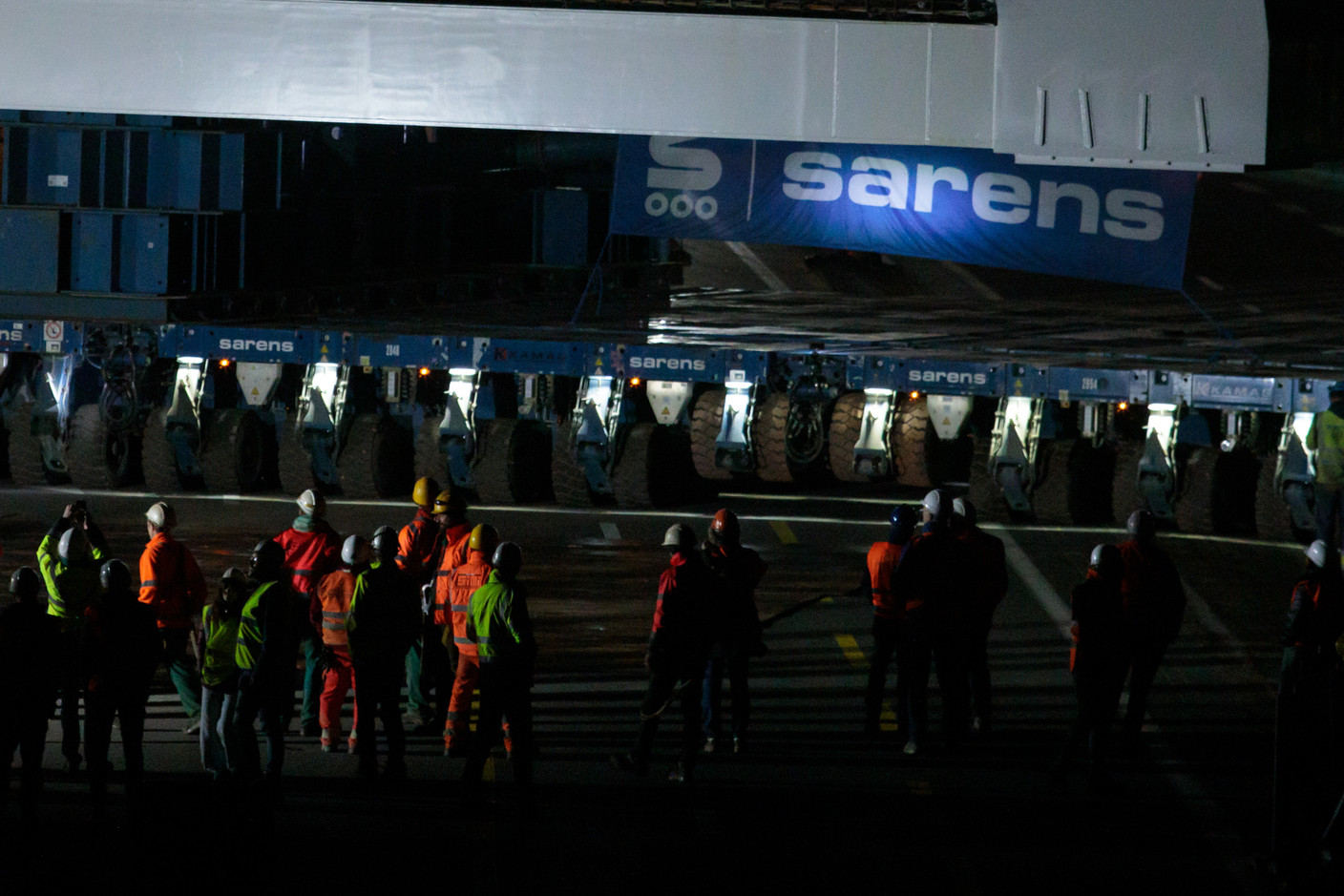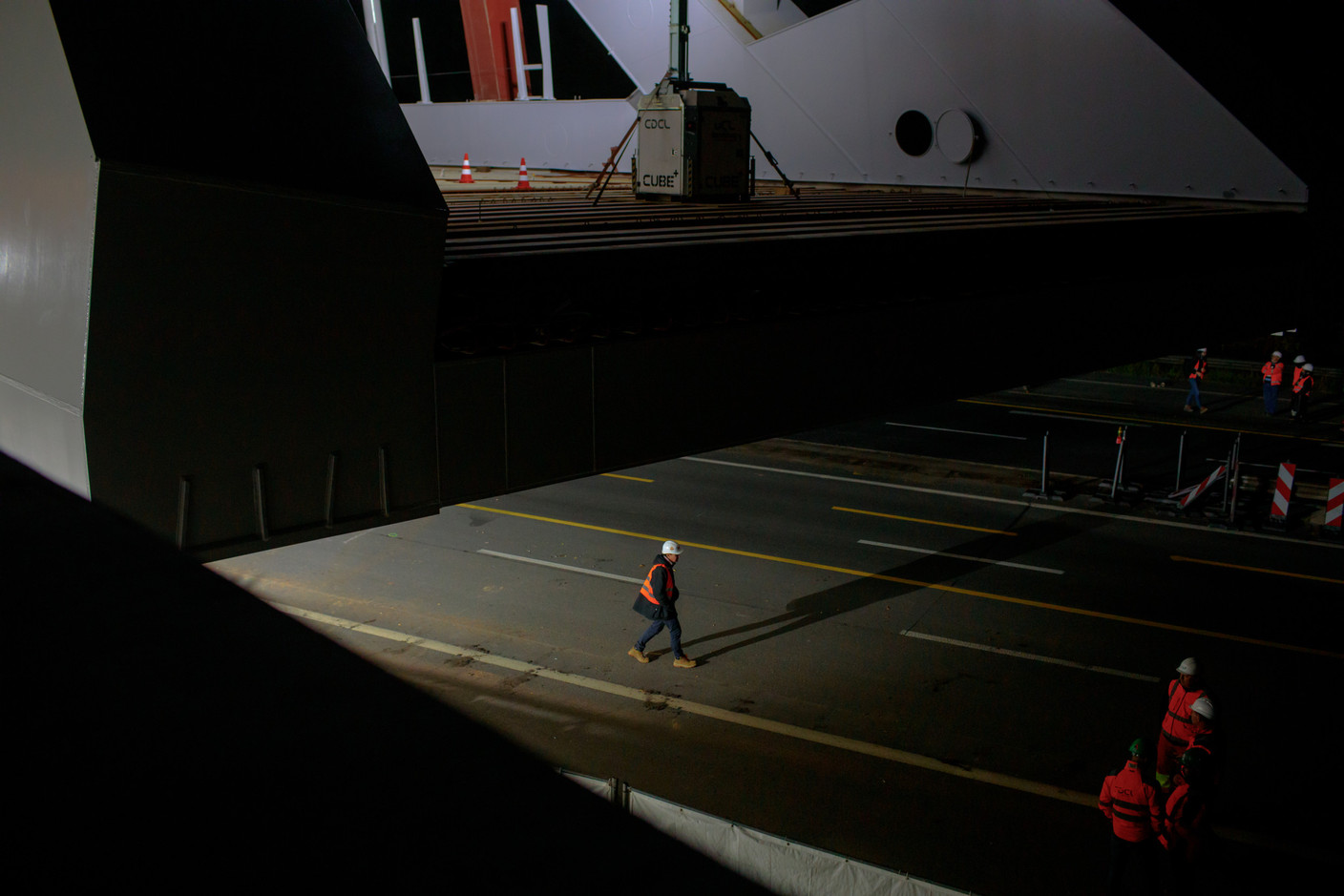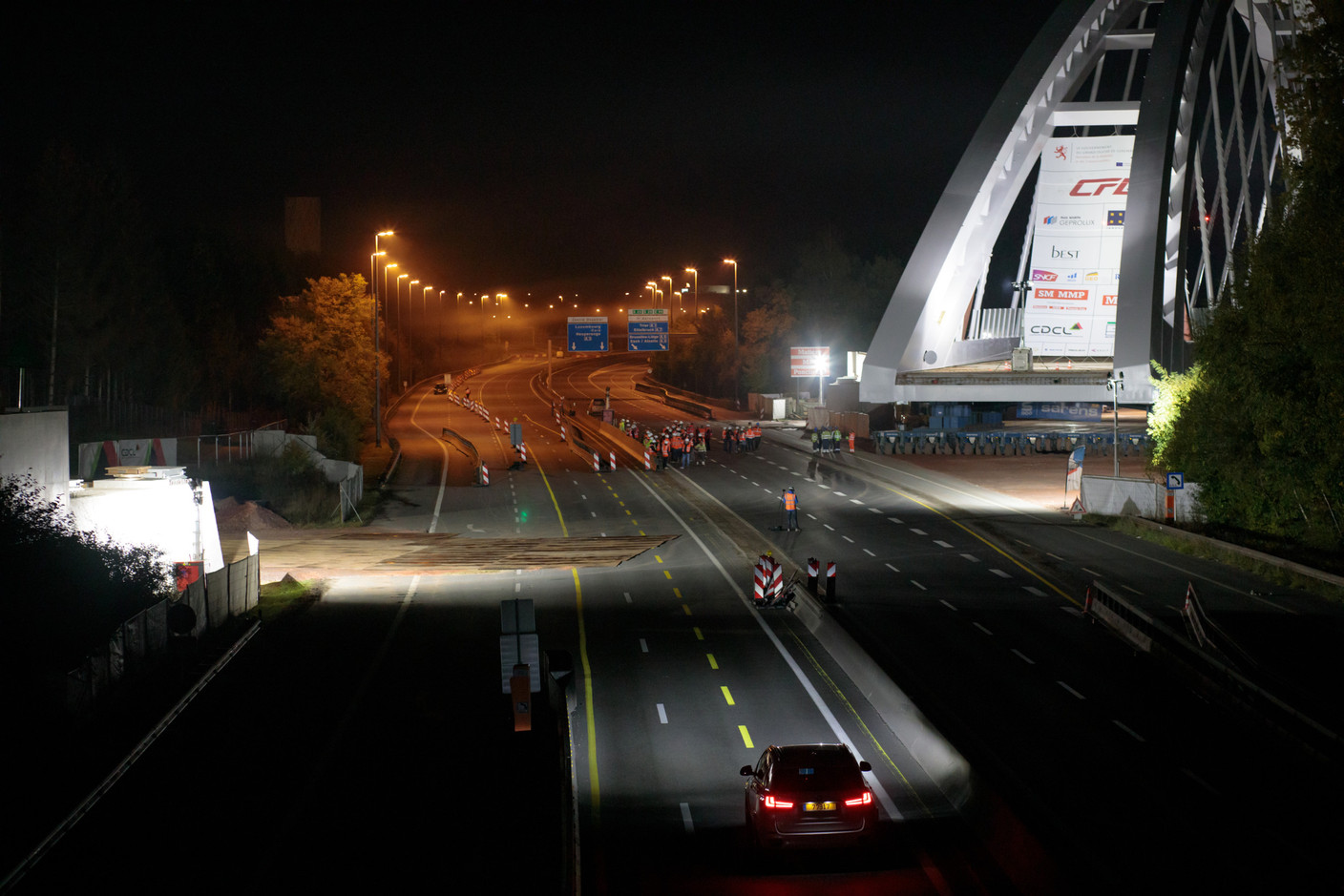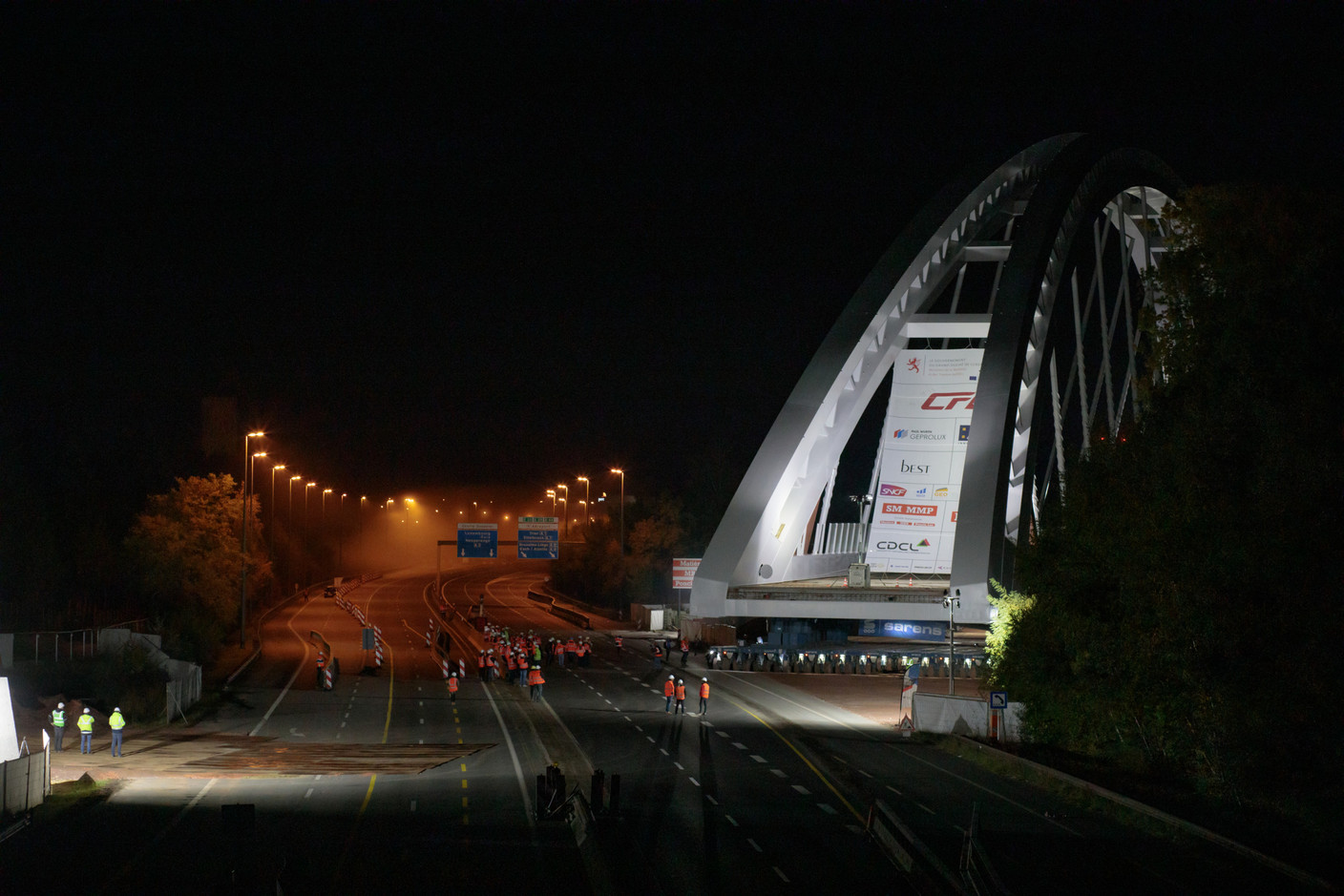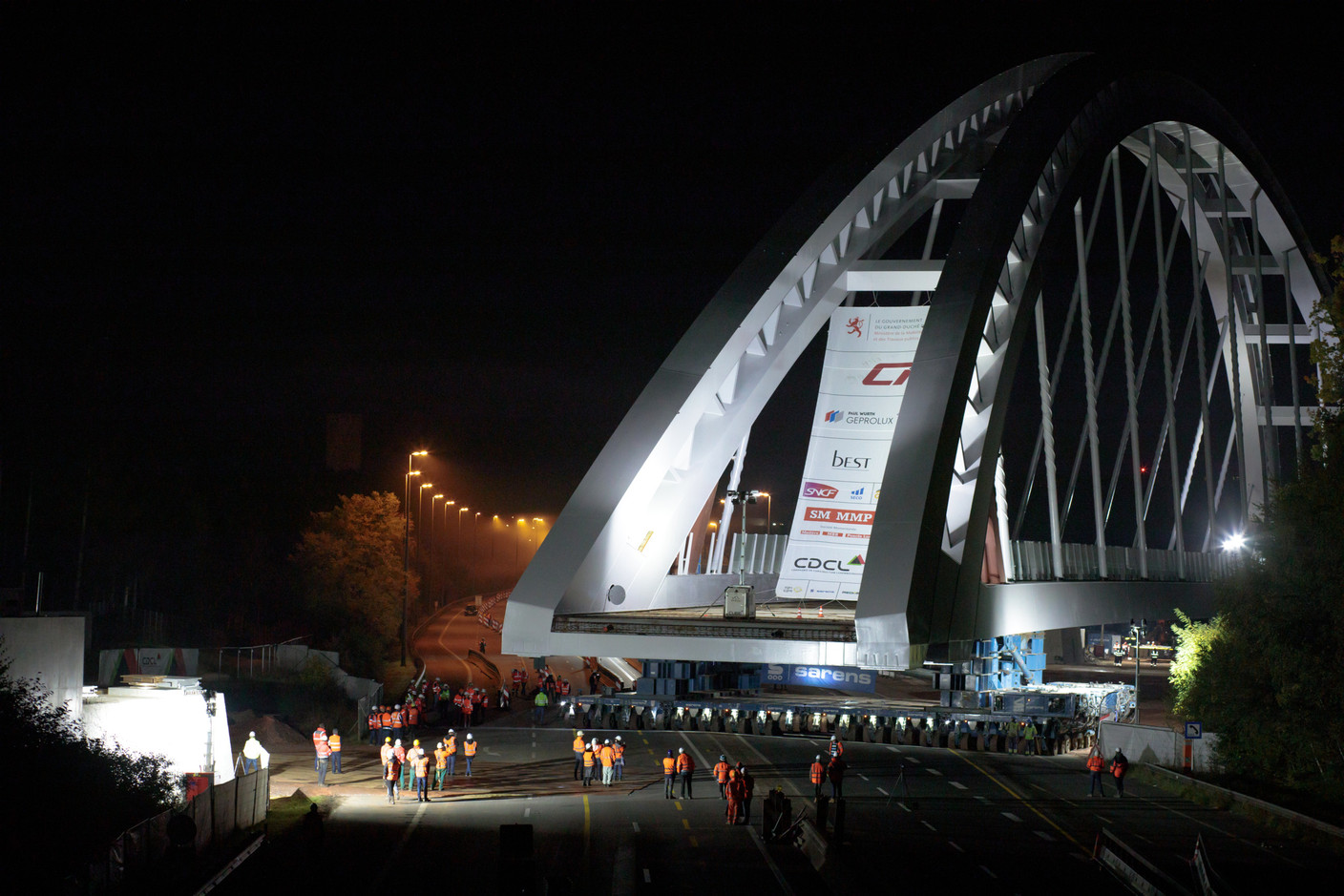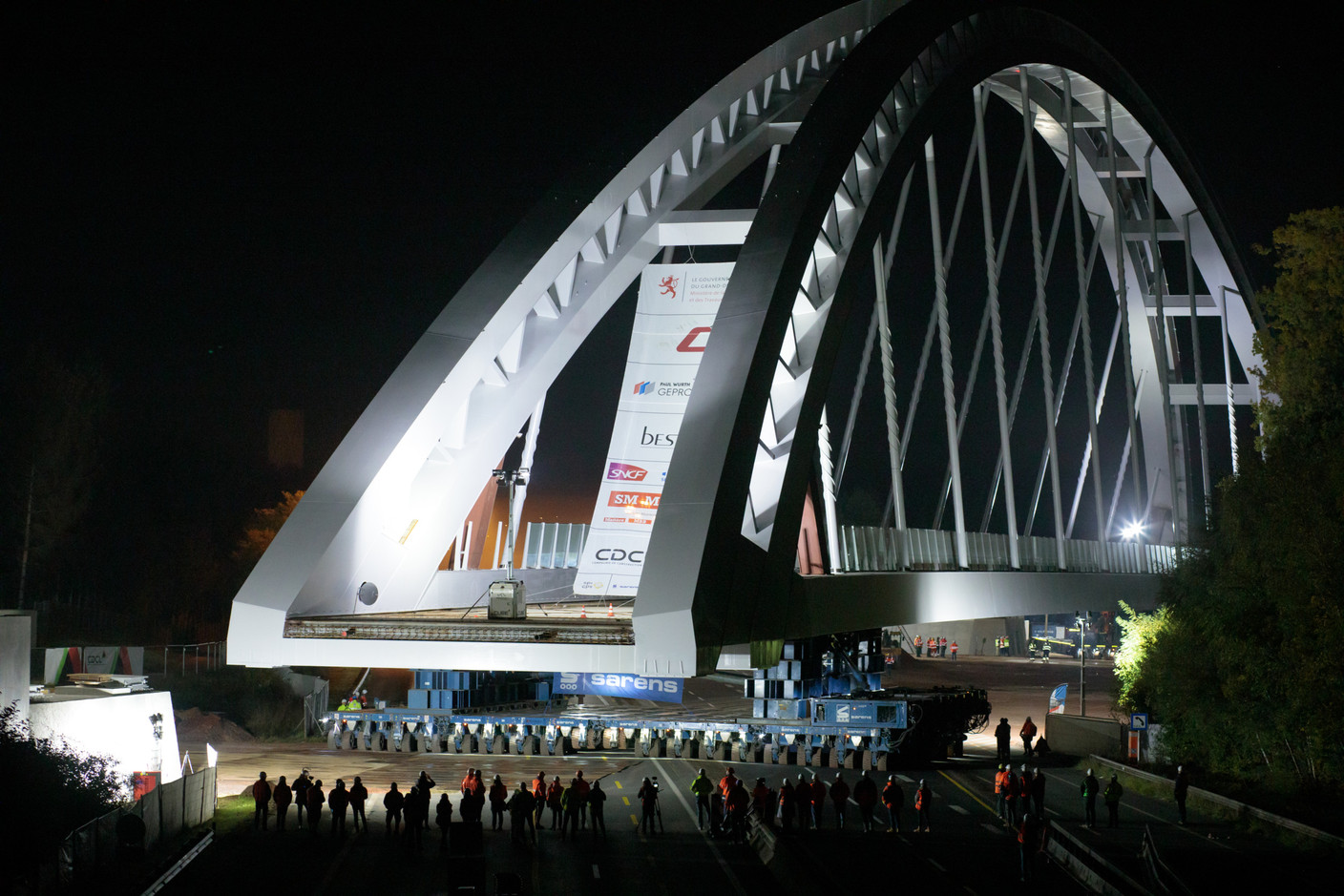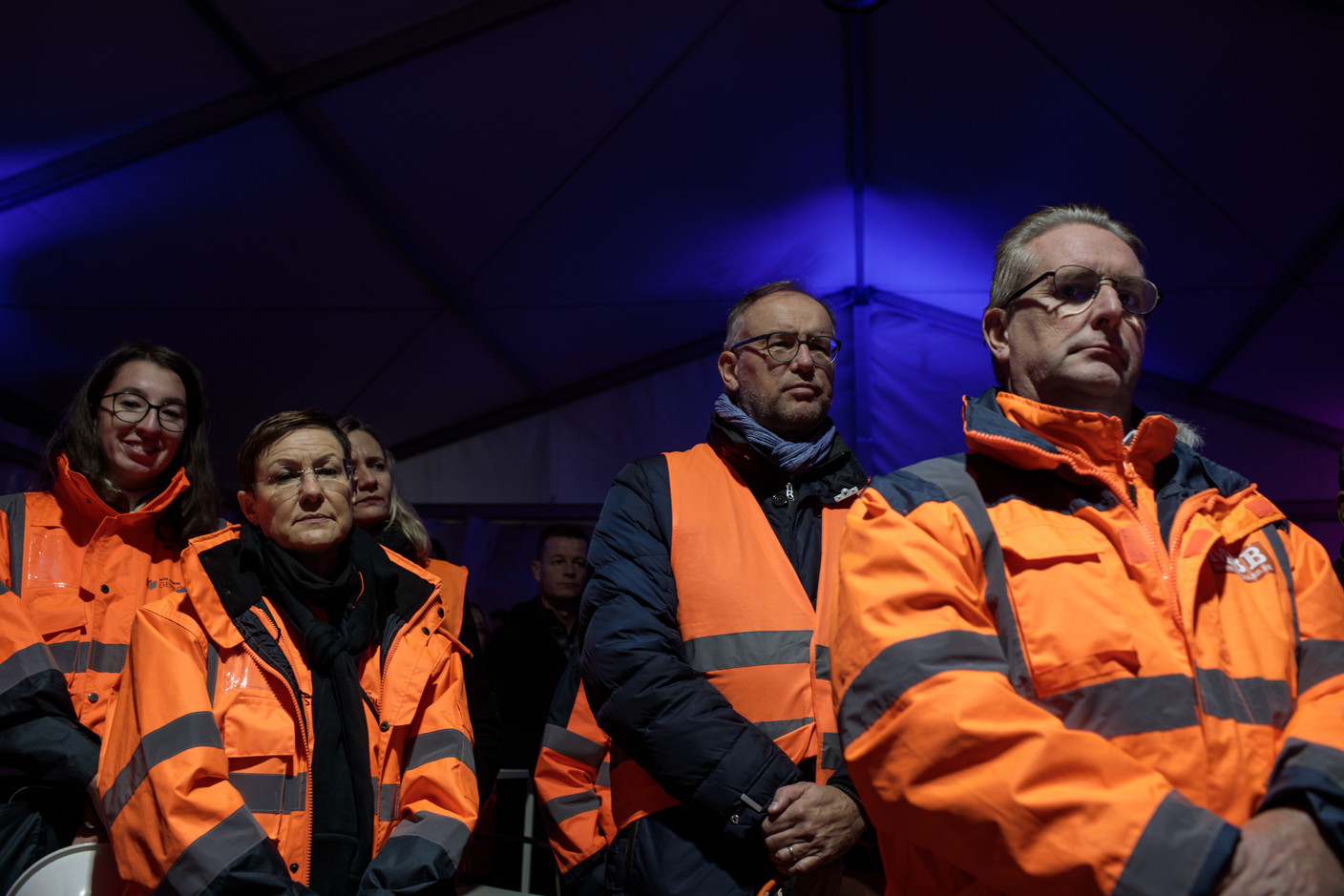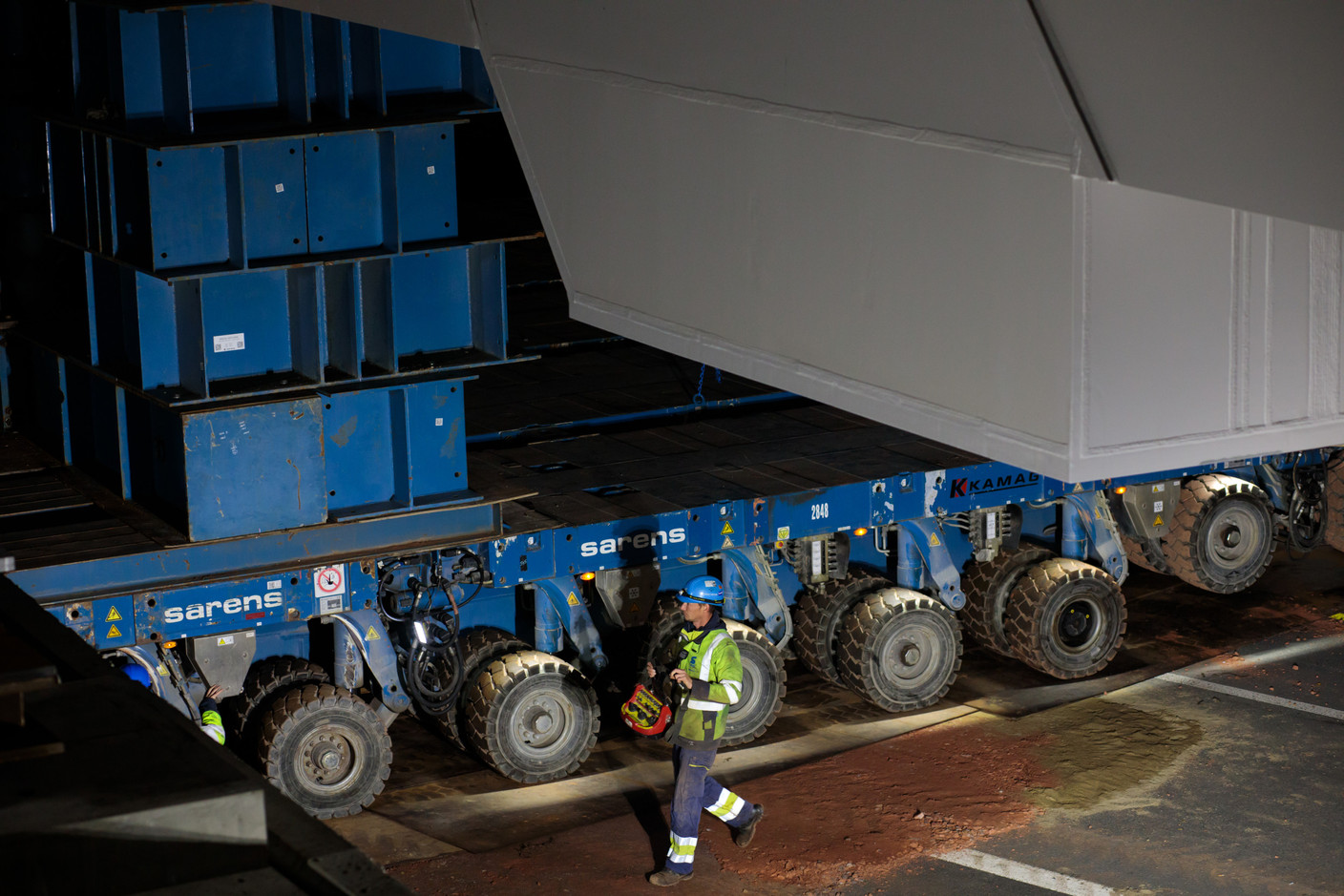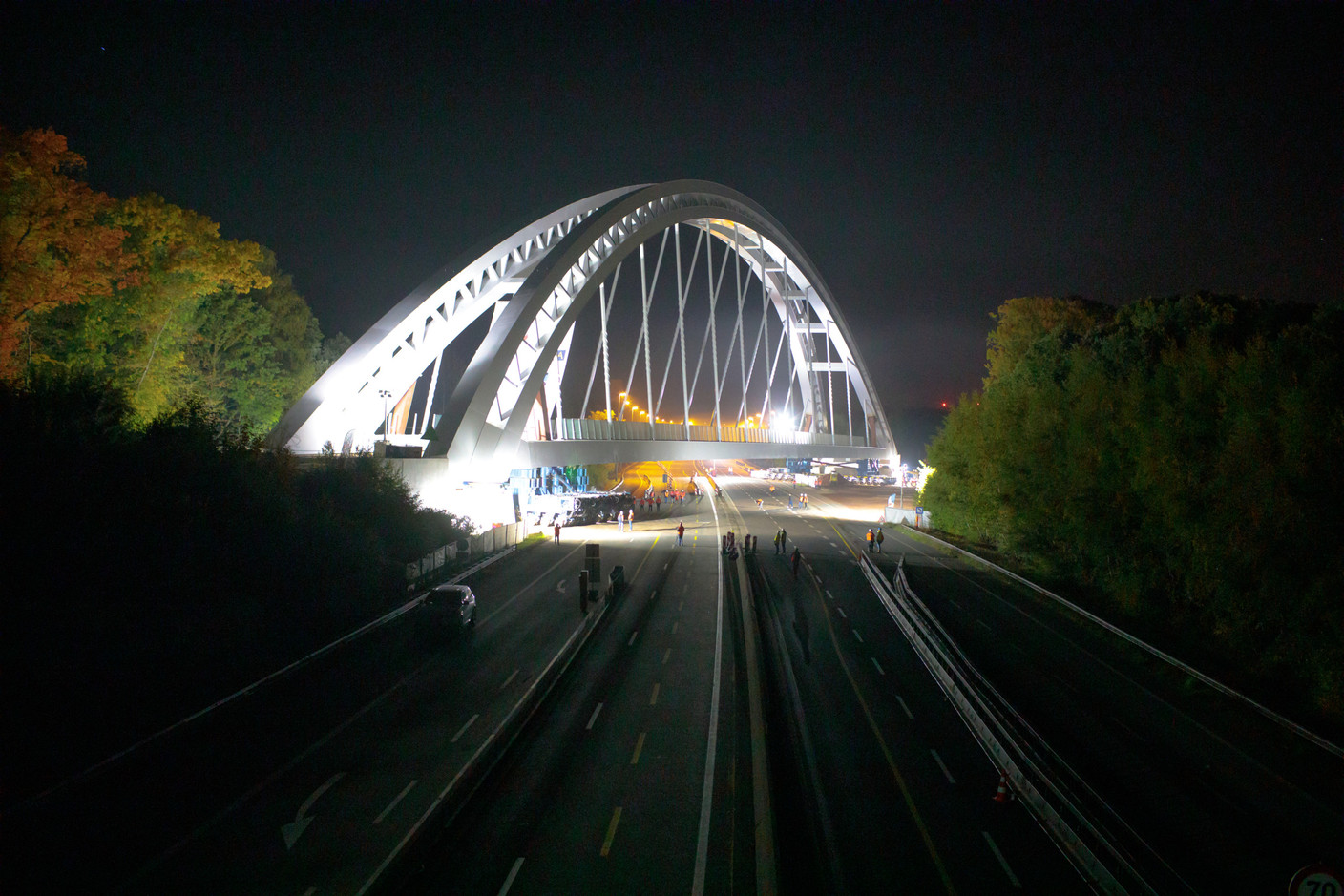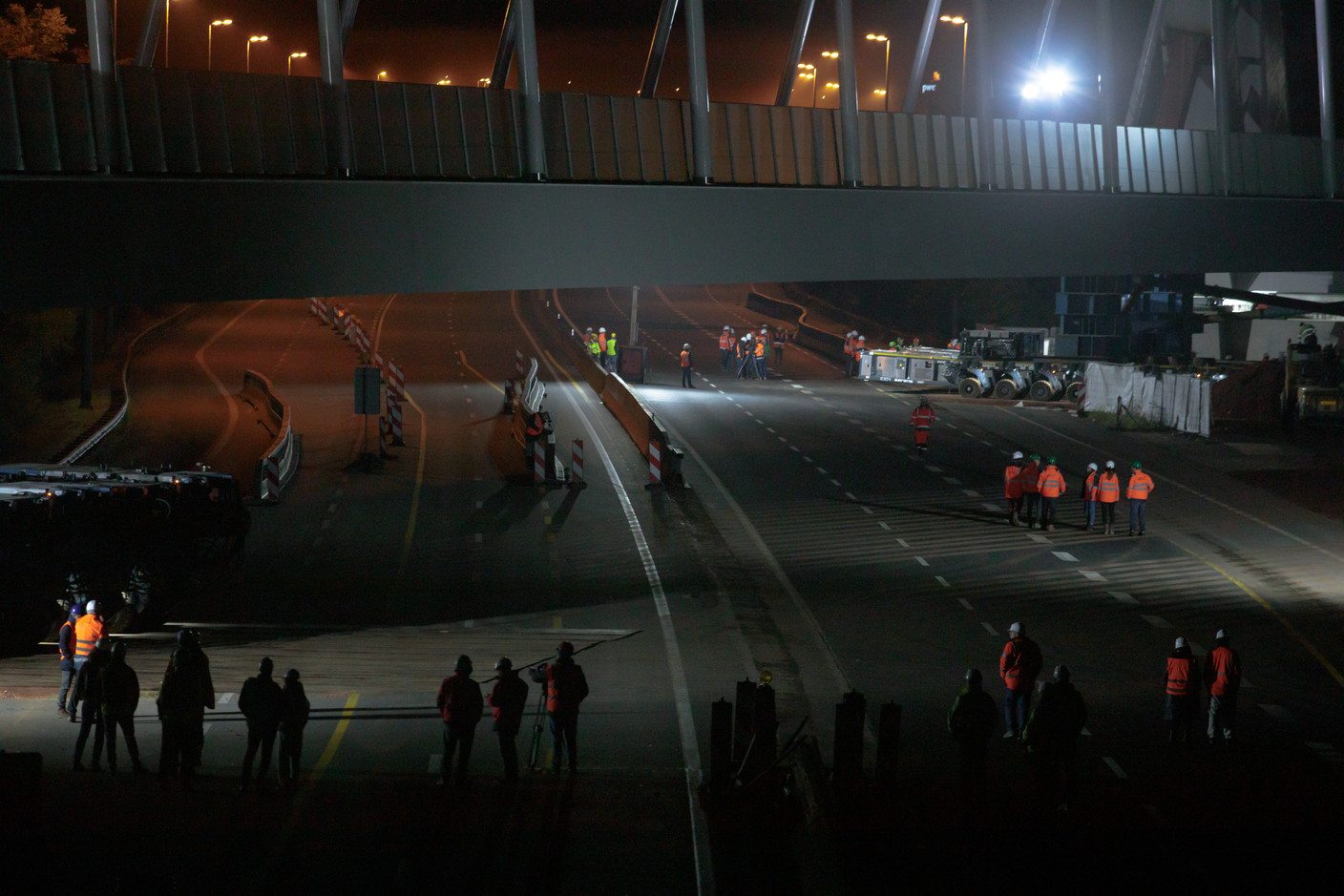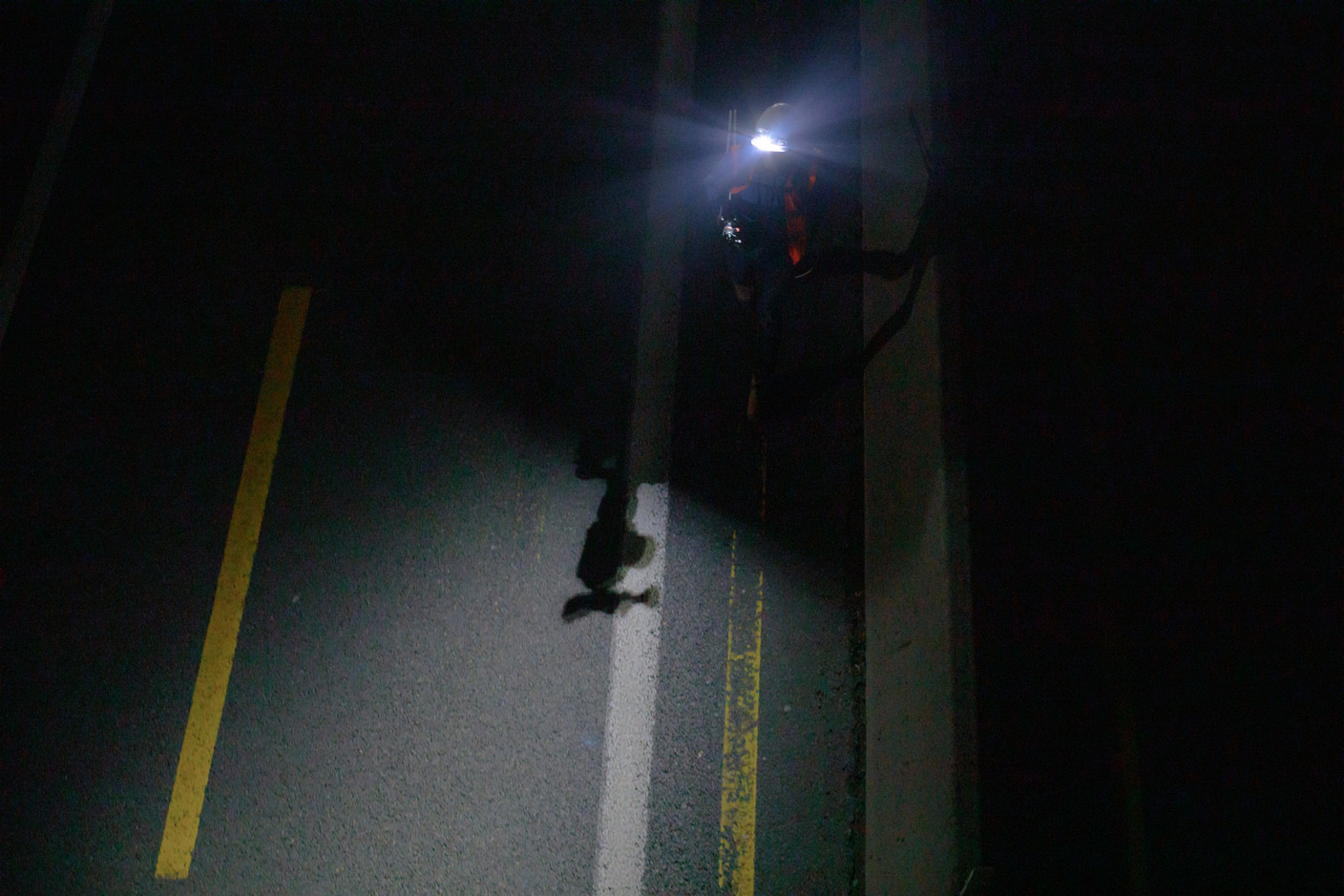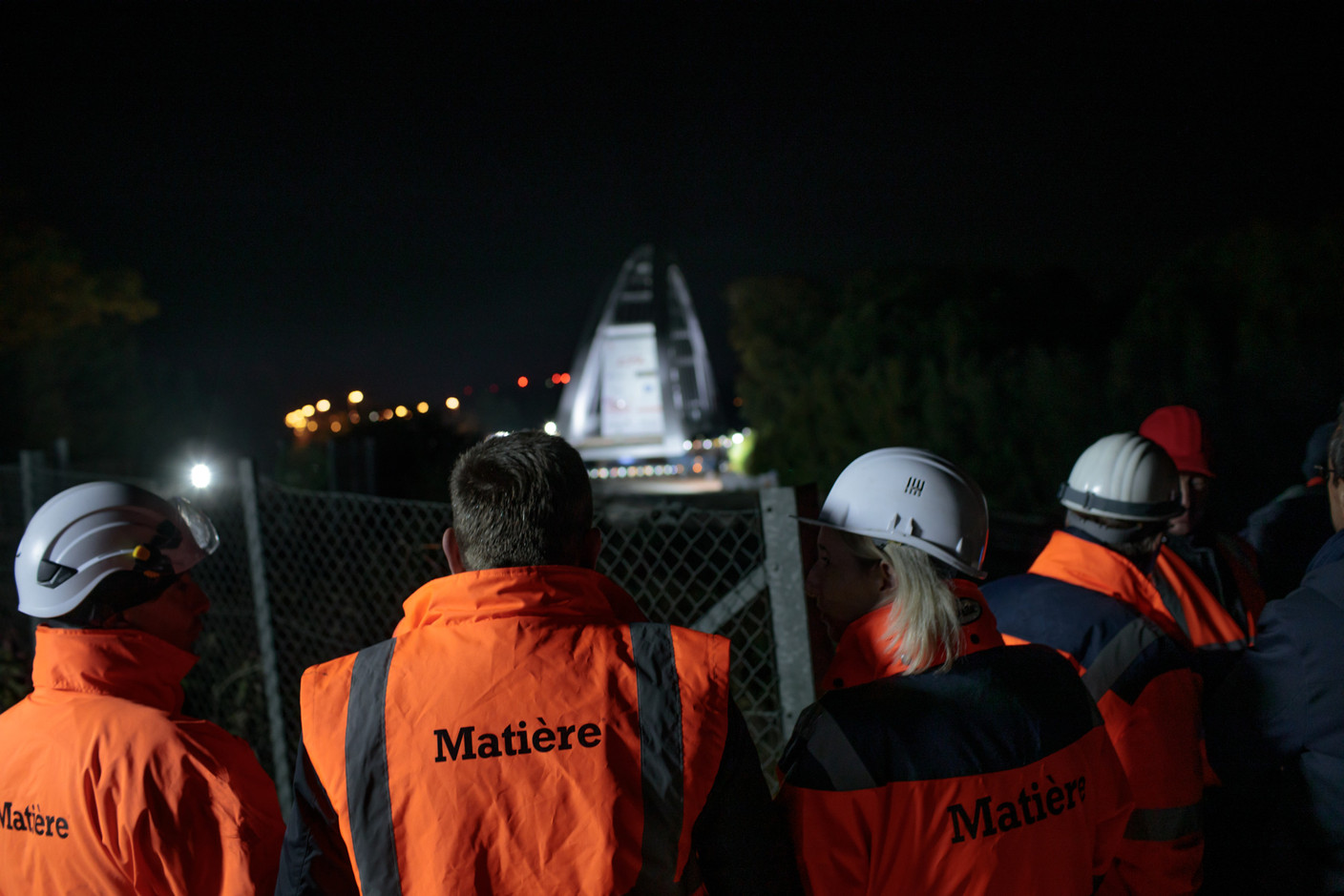The engineers from Niederanven-based firm --which designed and calculated the so-called bowstring bridge--were there for the special occasion. Some of them even came with their families, both to witness a rare event and to show the result of a long engineering process that began several years ago.
The shifting of the OA14 railway bridge began at around 1am. Two industrial transporters were placed under the double-arch structure, which is 200 metres long, 20 metres wide and weighs more than 5,800 tonnes. This self-propelled modular transporter is a machine specially designed for the shifting of heavy objects.
For a little over two hours, the OA14 railway bridge slowly but surely found its final position. The next step is the construction of the final deck to accommodate a double track railway. The bridge will be operational by 2028.
10 trains per hour
Accompanied by CFL director , transport minister (déi Gréng) said he was pleased to witness an important step for the country's rail mobility. “This is a complex operation that is part of a large project to modernise the railways and their capacities. It is an important investment and a real asset for tomorrow's mobility. The many people who have contributed to this work of art are to be congratulated,” he stressed, adding that investment in rail infrastructure must continue.
The bridge, which is part of a wider project to modernise the railway line between Luxembourg and Bettembourg, will enable the grand duchy to keep up with the growth in rail traffic, both for passengers and for goods. This new 7-kilometre railway line--at a total cost of €293m--will support the increase in passengers. The latter are growing by 3% to 5% per year. The bridge will allow the passage of ten trains per hour during peak periods. It will also increase the capacity of freight transport by rail.
This story was first published in French on . It has been translated and edited for Delano.
